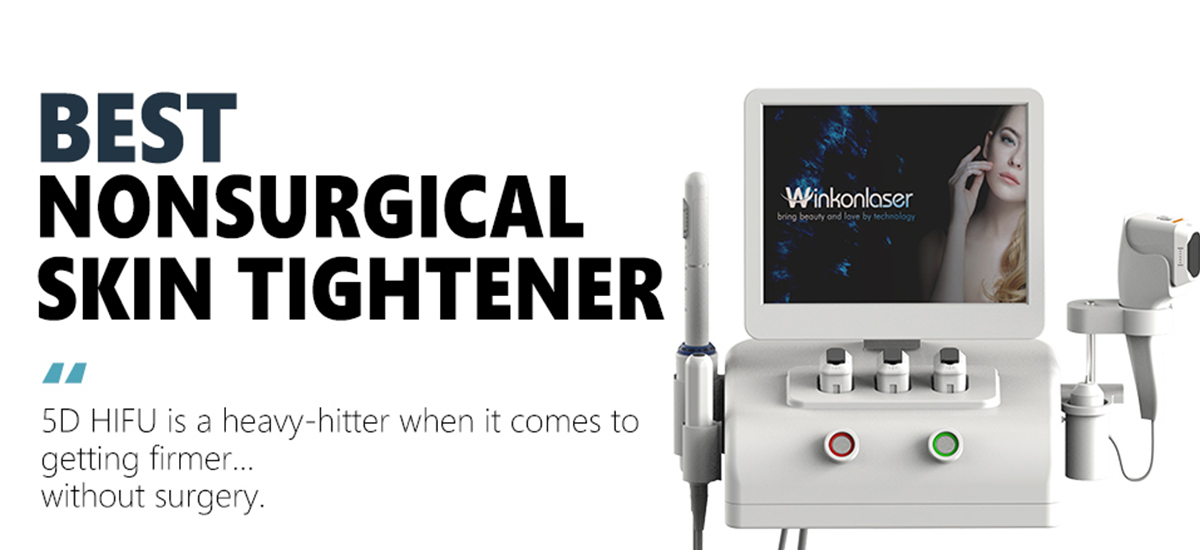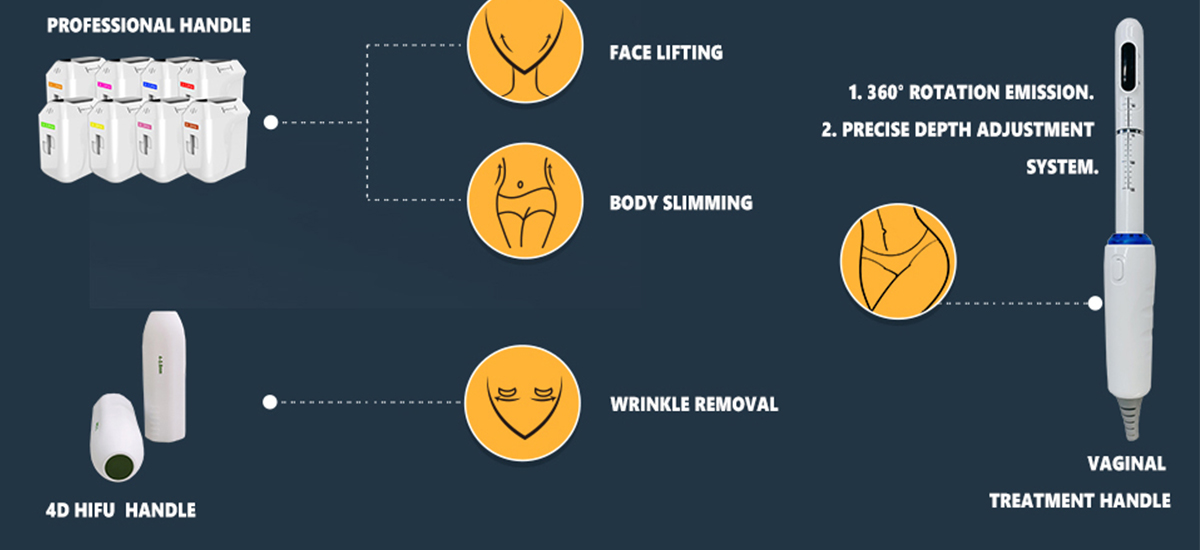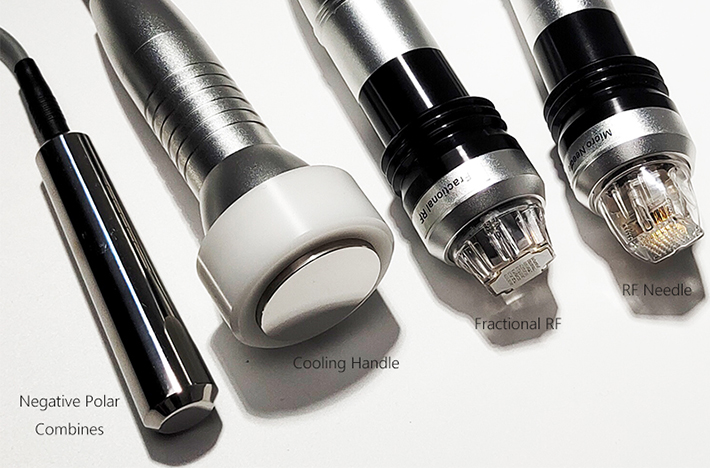A Comprehensive Analysis of High Intensity Focused Ultrasound and Radiofrequency Systems in Non-Invasive Aesthetic Technology
The field of non-invasive aesthetic treatments has changed dramatically with innovations such as high-intensity focused ultrasound (HIFU) and radiofrequency (RF) systems. These technologies offer solutions for skin tightening, collagen remodeling, and body contouring without surgical intervention.
The Evolution of HIFU: From 3D to 12D Systems
1. 3D HIFU: The Foundation of Multi-Layer Targeting
3D HIFU introduces the concept of multi-line energy delivery in the same plane, utilizing a wider area of action combined with 4Mhz to target different tissue depths – typically the superficial dermis, mid-dermis, and deeper subdermal structures such as the superficial musculoaponeurotic system (SMAS). This enables controlled thermal damage at specific depths. This stratification promotes collagen synthesis across layers, improving skin elasticity and achieving a mild lift.
Benefits:
Precise treatment of fine lines and early signs of sagging.
Reduced treatment time compared to single transducer devices.
2. 4D HIFU: Multi-site and precise energy delivery
The 4D system integrates cheek and eye treatment handles, and provides targeted local treatment through a specifically shaped treatment head. The doctor can adjust the energy parameters during the treatment to ensure the optimal thermal coagulation point (TCP) without overheating the surface tissue. Continuous feedback improves safety and effectiveness.
Advantages:
The treatment plan can be customized according to the individual’s anatomy.
3. 5D HIFU: Multi-dimensional treatment of the whole body
5D HIFU comprehensively utilizes the characteristics of hifu technology to effectively improve the loose skin of the face, body and vagina. The treatment area is easily affected by a special treatment device. The transducers arranged in a geometric pattern are used to transmit concentrated ultrasound. This produces a synergistic thermal effect at the focus, enhancing new collagen production while protecting surrounding tissues. This technology is particularly effective for body shaping because the concentrated energy destroys the fat cell membrane and helps to reduce local fat.
Advantages:
Diversified treatment areas.
The treatment course is shorter due to simultaneous multi-depth stimulation.
4. 7D HIFU: High Speed, Deep Coverage
The 7D system uses a deeper transducer to stimulate deeper collagen and tighten the facial skin more effectively. However, due to its single-line output shape, it has higher requirements for the operator.
Advantages:
Ideal for deep skin tightening treatments.
5. 12D HIFU: Rich Treatment Devices
The 12D configuration represents the pinnacle of hifu diversity, delivering energy to micro-areas in a single pulse through three completely different handpieces. Thanks to the design of the de-touchers that perfectly conform to the contours of the human body, this ultra-precision triggers powerful collagen cell regeneration without collateral damage. It is particularly suitable for delicate areas such as the periorbital area or the neck, where precision is critical.
Advantages:
Unparalleled precision for fine lines and delicate anatomical structures.
Radio Frequency Technology: Principles and Applications
Radio frequency (RF) devices use electromagnetic waves (300 kHz–10 MHz) to produce resistive heating within the dermis. When the current encounters tissue impedance, heat is generated, causing immediate contraction of collagen and long-term remodeling through elastin synthesis. Unlike HIFU, which focuses energy at a specific depth, RF provides uniform heating over a larger area, making it suitable for treating surface textural irregularities and cellulite.
Key Mechanisms:
Monopolar RF: Deep penetration (up to 20 mm), targeting subcutaneous fat and fibrous septa.
Bipolar/Multipolar RF: Confines energy to the dermis, ideal for surface tightening.
Fractional RF: Combined with microneedling to create microchannels, enhancing product penetration and collagen induction.
Advantages of RF:
Widely applicable to a variety of skin types and conditions (e.g., acne scars, stretch marks).
Minimal downtime compared to ablative procedures.
Comparative Analysis: HIFU vs. RF
1. Mechanism of Action
HIFU: Uses acoustic energy to induce thermal coagulation at a precise depth (1.5–16.00 mm). Focused ultrasound waves bypass the epidermis, minimizing surface damage.
RF: Relies on electromagnetic energy to produce volumetric heating, affecting the entire dermal thickness.
2. Depth of penetration
HIFU: Targets the SMAS layer (4.5–5.0 mm) for structural lift, making it more suitable for midface or jawline contours.
RF: Typically achieves 2–5 mm, depending on the modality, prioritizing dermal remodeling over deep tissue lift.
3. Treatment results
HIFU: Results are gradual over 2–3 months as new collagen matures, and results can last 12–18 months. Best for patients seeking a long-term lift.
RF: Immediately contracts collagen for immediate tightening, but requires repeated treatments (3–6) for cumulative effects. Results can last 6–12 months.
4. Patient tolerance
HIFU: May cause transient discomfort due to focused energy pulses. Anesthetic cream is usually used.
RF: Generally well tolerated, with a warming sensation during treatment. Cooling system for increased comfort.
5. Synergistic Use Cases
Combining HIFU and RF produces comprehensive results:
HIFU addresses laxity in deep structures.
RF improves epidermal texture and elasticity.
Microneedling-RF hybrid therapy enhances scar revision or pigmentation treatment.
FAQ: High Intensity Focused Ultrasound and Radiofrequency
1. Which is better for sagging chins, HIFU or RF?
HIFU is more popular because it targets the SMAS layer, providing a lifting effect. RF complements this by tightening the epidermis.
2. Are these treatments painful?
HIFU may cause mild discomfort and is usually treated with a local anesthetic. RF is generally painless, and patients report a warming sensation.
3. How many treatments are needed?
HIFU generally requires 1-2 treatments per year. RF requires 3-6 treatments, 4-6 weeks apart, to achieve optimal results.
4. Can HIFU and RF be combined in one treatment?
Yes, combining the two modalities can treat multiple tissue layers, but treatments should be tailored to avoid overtreatment.
5. Are there any contraindications?
Neither treatment is suitable for pregnant women or those with active infections. HIFU is not recommended for very thin patients due to the loss of subcutaneous fat.
6. How soon can I return to normal activities?
Neither treatment requires downtime, but minor redness or swelling may subside within 24-48 hours.
Conclusion
The choice between HIFU and RF depends on the patient’s actual situation. While HIFU excels in deep tissue lifting and long-term structural restoration, RF has versatility in texture refinement and surface tightening.







Leave a Reply
You must be logged in to post a comment.